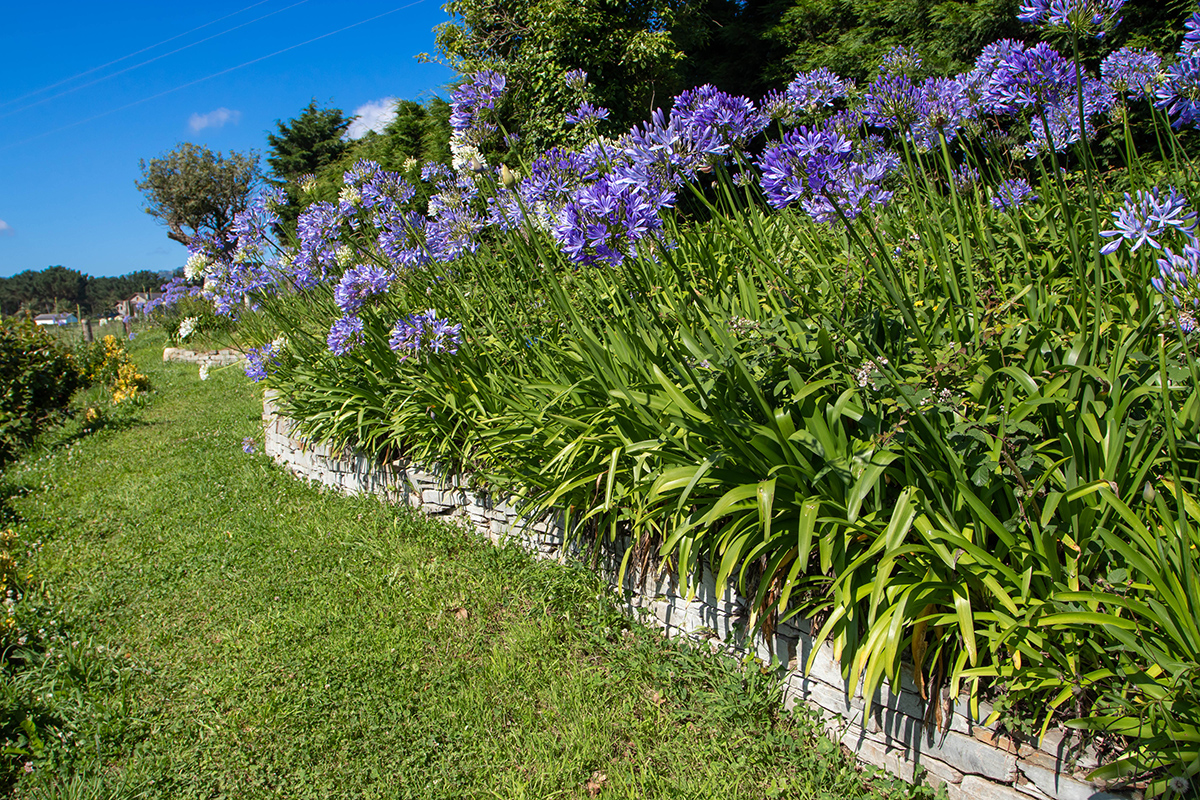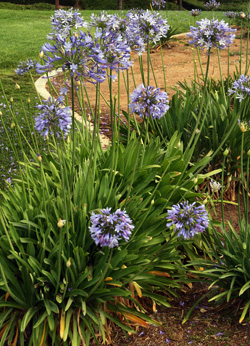Unleashing the Secret to Successful Agapanthus Growing: Idea for a Flourishing Yard
In the world of horticulture, growing agapanthus efficiently calls for a critical technique that encompasses various facets of plant care. With careful attention to information, one can open the keys to nurturing these magnificent blooms, leading to a garden that grows with appeal and vibrancy. By comprehending the subtleties of agapanthus growing, one can develop a setting where these plants thrive and bloom abundantly. In the following conversation, we will discover necessary tips and tricks that will certainly assist you in the direction of a thriving agapanthus garden, supplying understandings into best techniques, dirt conditions, watering strategies, and a lot more.
Planting Agapanthus: Ideal Practices
When planting Agapanthus, proper soil preparation is essential for guaranteeing effective growth and advancement of these gorgeous flowers. Agapanthus, generally understood as Lily of the Nile or African lily, flourishes in well-draining dirt with a slightly acidic to neutral pH degree - Agapanthus. Before planting, it is crucial to amend hefty clay dirts with raw material such as garden compost or peat moss to enhance drain and offer important nutrients for the plants
To grow Agapanthus, choose a place that receives full sunshine to partial shade, as this will certainly advertise healthy and balanced development and bountiful blooming. Dig an opening twice the diameter of the plant's root round and put the Agapanthus at the same depth it was previously growing. Delicately backfill the hole with dirt, pushing down strongly to remove any type of air pockets around the roots.
Water the recently grown Agapanthus extensively and remain to keep the dirt evenly moist, specifically during the plant's active growing period. Agapanthus. Applying a well balanced fertilizer once a month can further sustain the plant's development and flowering. By following these best methods for planting Agapanthus, you can produce a spectacular display screen of these captivating flowers in your yard
Perfect Dirt Conditions for Agapanthus
For optimal growth and growing success of Agapanthus plants, ensuring the dirt problems are perfect is critical. Agapanthus chooses soil that is rich in nutrients, so including a well balanced fertilizer during the expanding period can advertise healthy and balanced development and dynamic blossoms.

Watering and Feeding Tips
To guarantee healthy development and lively flowers, proper watering and fertilizing methods are important for effective Agapanthus cultivation. Agapanthus plants take advantage of routine watering, especially throughout the growing period. It is suggested to water deeply as soon as a week, guaranteeing the dirt is moist however not saturated. Throughout hot climate or in pots, more regular watering might be needed to stop the dirt from drying completely.
When it pertains to feeding Agapanthus, a balanced fertilizer with equivalent components nitrogen, phosphorus, and potassium can be applied in the spring to advertise healthy and balanced growth and flowering. Slow-release plant foods are ideal for providing nutrients progressively over a prolonged period. Avoid over-fertilizing, as this can bring about extreme foliage development at the cost of blooms.
Additionally, including raw material like garden compost right into the soil can boost nutrient levels and improve dirt framework, assisting in the general health and wellness of the Agapanthus plants. By following these watering and feeding ideas, gardeners can guarantee their Agapanthus plants thrive and produce stunning display screens of flowers.
Trimming and Deadheading Techniques
Correct pruning and deadheading strategies play a crucial function in keeping the health and wellness and aesthetic appeals of Agapanthus plants, complementing the necessary practices of watering and feeding for effective cultivation. Pruning Agapanthus includes getting rid of spent blossom heads, dead or yellowing leaves, and total shaping of the plant to promote far better growth. Deadheading, the process of getting rid of faded blossoms, not only boosts the plant's appearance however additionally encourages additional over here growing.
When deadheading Agapanthus, it is a good idea to trim off the flower stem at the base utilizing sharp, tidy shears. This process redirects the plant's energy from seed manufacturing back right into root and vegetation growth, promoting a much healthier and extra robust plant. Regular deadheading can prolong the growing period of Agapanthus and protect against self-seeding, which can result in congestion.
In terms of trimming, Agapanthus usually take advantage of a light trim after blossoming to clean up the plant and urge fresh development. Cutting down the invested flower stems and eliminating any type of dead or broken foliage aids keep the plant's vitality and total look. Nevertheless, it is necessary to stay clear of reducing right into the crown of the plant, as this can deteriorate its health and wellness.

Protecting Agapanthus From Pests and Diseases
Implementing reliable bug and disease management strategies is critical to guarding the health and wellness and vitality of Agapanthus plants in farming. Agapanthus are normally sturdy plants, yet they can still come down with different insects and conditions otherwise correctly taken care of. One common parasite that impacts go to my site Agapanthus is the Agapanthus borer, a caterpillar that tunnels right into the plant, causing damage to the blossoms and leaves. To stop infestations, routine inspection of the plants is crucial. If borers are found, they can be manually gotten rid of, or insecticidal soap can be utilized as a control step.
In enhancement to parasites, Agapanthus are susceptible to conditions such as origin rot and fungal leaf areas. By remaining cautious and addressing pest and condition concerns immediately, garden enthusiasts can assist their Agapanthus prosper and prosper.

Verdict
To conclude, effective growing of agapanthus requires correct growing techniques, ideal soil problems, sufficient watering and feeding, normal pruning and deadheading, and protection from insects and conditions. By following these ideas and methods, gardeners can make certain a flourishing garden loaded you could check here with gorgeous agapanthus flowers. Agapanthus. Bear in mind to maintain consistent care and interest to detail to advertise the wellness and long life of these stunning plants
When planting Agapanthus, appropriate dirt prep work is essential for guaranteeing successful development and growth of these beautiful flowers.Water the newly planted Agapanthus completely and continue to keep the dirt evenly damp, particularly during the plant's active growing season.For ideal growth and flowering success of Agapanthus plants, guaranteeing the soil conditions are excellent is important. When growing or hair transplanting Agapanthus, guarantee the soil is well-prepared to offer the required foundation for the plants to establish themselves successfully. One common pest that influences Agapanthus is the Agapanthus borer, a caterpillar that passages right into the plant, triggering damage to the leaves and flowers.